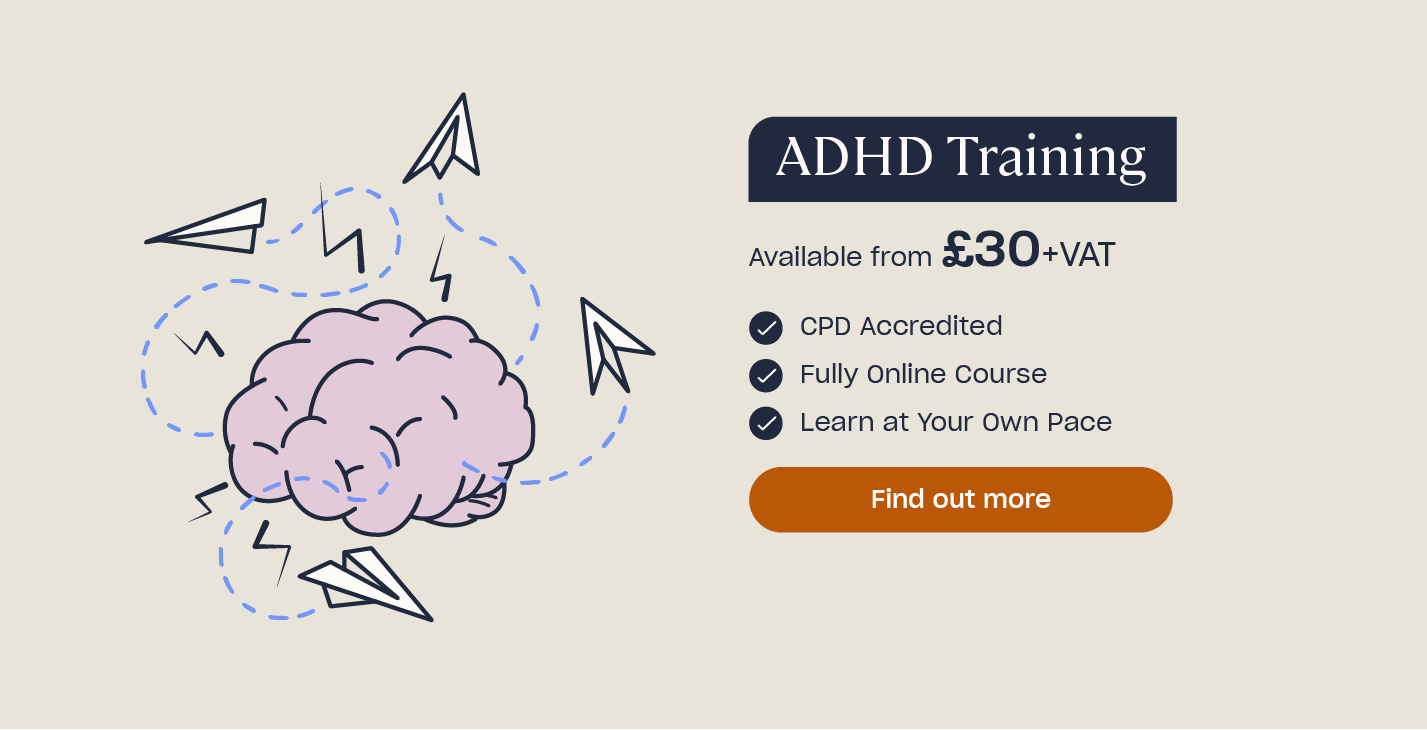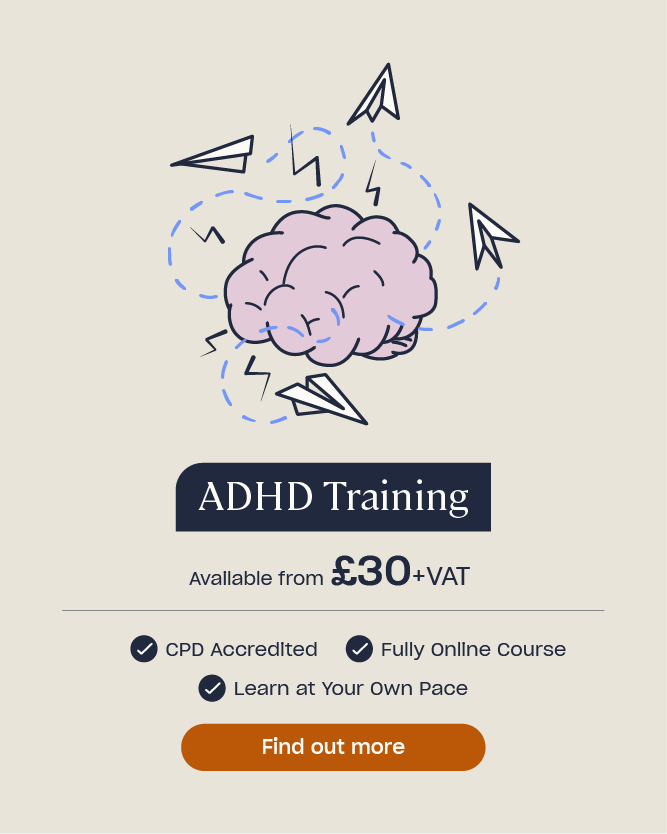How Does ADHD Differ in Females?
Attention-Deficit Hyperactivity Disorder, commonly known as ADHD, affects as many as 5% of children and 3% of adults in the UK. It is estimated that 1.5 million adults have the condition but only 120,000 of these have been diagnosed.
ADHD is a condition that is more commonly associated with “hyper” young boys. Research now suggests that this isn’t the case, and there is a strong argument that ADHD is not gender biased. Our assumption that it affects mostly boys is based on the fact that more boys have been diagnosed with ADHD.
This article aims to raise awareness of how ADHD can present differently in girls and women, and what behaviours to be aware of when considering if a girl, or woman, may be exhibiting signs of ADHD.
What is ADHD?
ADHD is a neurobiological condition, that can cause behavioural difficulties. It can impact on a child’s life from their early development, through school and into adulthood. Unless diagnosed and treated properly, it can extend to all aspects of a person’s life.

There are three subtypes of ADHD depending on which symptoms a person displays:
- Predominantly hyperactive
- Predominantly inattentive
- The combined type which is both hyperactive and inattentive.
The main signs of hyperactivity are impulsiveness and finding it difficult to concentrate on tasks. Often the hyperactive ADHD type will manifest in conduct such as fidgeting, talking over others, and being unable to sit still. Especially in a classroom setting, this behaviour can be considered disruptive, leading the child to be punished, despite it not necessarily being in their full control. However, there are techniques teachers can use to help both the child and their peers. While this type of ADHD can be difficult to manage, it is easier to spot the symptoms and make for a quicker diagnosis.
People who have symptoms of inattentiveness, but not hyperactivity or impulsiveness, can be diagnosed as having a form also known as Attention Deficit Disorder (ADD). Symptoms of inattentive ADHD, or ADD, can include daydreaming, disorganisation, having a short attention span and being unable to follow instructions.
There is much less research on inattentive ADHD, and with less disruptive symptoms, it can be harder to spot in a classroom. Often, undiagnosed sufferers of this type can fall under the radar and be labelled as “lazy” or “uninterested.”
Need a Course?
Our ADHD Awareness Training course aims to raise your understanding of what ADHD is, what might cause it, and most importantly how to support children and families so that children are able to get the best outcomes for occupational, educational, and social success. You may also be interested in our SEND in the Classroom course.
How Does ADHD Affect Females?
We have come to think of ADHD as only affecting boys, typically showing them to be hyperactive and disruptive in school and at home. We might not immediately imagine the young, quiet girl in the corner as also potentially having the same condition. Neither do we consider the adult woman, struggling to cope with work and home life, as having ADHD.
Studies show that females tend to have more symptoms of inattentive ADHD than of hyperactive ADHD. There is also evidence that females who do have symptoms of hyperactive ADHD display these differently from males with the same type. Because of these differences, it can be harder to diagnose girls and women.
What can ADHD in girls look like?
A girl with inattentive ADHD may be known as a ‘day-dreamer’ and someone who has trouble concentrating in school. They may produce good work, but can take time to get there. Also they are often forgetful, disorganised and have trouble remembering instructions, or remembering to complete a task. And they are easily mislabelled as lazy or stupid:
Sophie is 10 and has always been a bright student, but recently she has begun to fall behind at school. At a parents evening, the teacher tells her parents that she is often in her own world, and doesn’t pay attention to instructions. She often forgets things, such as homework or her PE shoes. There have also been recent playground issues and arguments with friends. Sophie’s parents are understandably concerned and ask her what is the matter? She admits struggling to pay attention and worries about asking for help, as she was told off previously for not listening. She has always been forgetful but the pressure she feels is building and spilling over, causing volatile behaviour with her friends. Sophie’s parents take her to their GP who refer her to a specialist. From here she can get the diagnosis, treatment and support she needs to help her understand herself and cope better with her ADHD.

Girls with hyperactive ADHD on the other hand can be impulsive, bright and easily distracted:
Becky is 14 and has been getting into trouble at school. The headteacher calls her parents in to discuss how to manage her behaviour. Becky talks a lot in lessons, ignoring the teachers and distracting other pupils, and has also started hanging around with a bad crowd. Even though she often changes her friendship group, this new set encourage her to skip lessons and get into trouble outside of school. Her grades are very good and the teachers believe she is frustrated by her intelligence and needs more challenge. Becky’s parents think she might have ADHD, as her mother was diagnosed in her twenties, she recognises similar behaviour in Becky that she had when she was younger.
Both of these girls had ADHD, yet they displayed their symptoms differently. Both of them could easily have been overlooked- seen simply as too lazy, or intelligent with a rebellious streak. Girls with ADHD often develop coping strategies based on emotion rather than logic, and they can play down their success, often attributing it to external factors.
What can ADHD in women look like?
The examples above show how girls with ADHD can internalise their problems. This trend will follow them from primary to secondary school and it can continue throughout their adult life.
It is estimated that between 50% and 75% of adult women with ADHD are undiagnosed.
Michelle Beckett is an example of the effects that not receiving an ADHD diagnosis until later in life can have. She was told she was suffering with depression, then a ‘mood disorder’ like Bipolar 2, but not quite. A huge amount of stress from a failed business relationship saw her standing on the edge of a viaduct, contemplating taking her own life. After finally receiving the diagnosis of ADHD, she says her life makes sense now, and she can treat her ADHD effectively. She now puts her efforts into raising awareness and providing support to others through her charity ADHD Action.
Not knowing they have ADHD, some women instead will feel they lack qualities that other, ‘normal’ people appear to have. Their low self-esteem can impact on their personal relationships with family life and at work. There are also studies which show that women with ADHD are more likely to experience drug abuse, are more prone to self-harm and are more likely to attempt suicide.
Why is ADHD Less Commonly Diagnosed in Women and Girls?
As many as 5% of school children could have ADHD, but the number of boys who are diagnosed compared to girls is 4:1. There are several factors which could be contributing to the lack of female diagnosis:
ADHD Research
It’s fair to say that the majority of our understanding of ADHD comes from research compiled from studies of young white males, who present hyperactive ADHD. However, there are many new studies underway and it is this new research which has helped develop our understanding of ADHD in females.
Diagnostic Criteria
A challenge that some parents face is getting to a GP and having their daughter assessed based on criteria which she simply doesn’t fit. The controversial Diagnostic and Statistical Manual of Mental Disorders lists the criteria for ADHD the same for males and females. This is despite evidence suggesting that females meet fewer of these criteria, but are just as affected by their symptoms as the males who meet more criteria. It is suggested that girls should be compared to other girls in their peer group, and that the standardised questionnaires should be updated. There are also reports that say both teaching staff and healthcare professionals need better training on identifying the symptoms of ADHD in girls.

Misdiagnosis
As girls can internalise symptoms and stress caused by undiagnosed ADHD, it can often manifest in other ways. Girls with ADHD are more likely to have additional behavioural problems, such as depression, anxiety and low self-esteem, which can lead to eating disorders and addictions as they try to cope. These then become the focus of their treatment, instead of their ADHD.
Before receiving treatment for ADHD, a nationwide survey reported, 14% of young girls were treated with antidepressants compared to just 5% of young boys. This highlights how other treatments are first sought for girls before considering ADHD treatments.
Hyperactive vs Inattentive ADHD
As we have covered, there are different types of ADHD, and recent studies have indicated that girls tend more towards the predominantly inattentive type. Girls with this type of ADHD can find it hard to concentrate on tasks at home and at school. However, if they find something interesting, they can become wholly absorbed by it. They can also be easily distracted by their surroundings or by their inner thoughts. Their hyperactivity displays in hair twiddling, fidgeting or doodling. They can also have poor organisational skills, being often late, and scatty with important belongings.
A review published in 2014 also suggested that girls develop better coping mechanisms than boys with ADHD. As seen in Sophie’s story above, girls who feel they are punished for their behaviour will seek to hide it. They can pretend to be listening on the outside, but inside they may be completely lost. This makes it hard for teaching staff to pick up on problems, especially when homework is still completed on time and there is no obvious difficulty other than a lack of application by the student.

Expectation of Women
Another reason for lack of female diagnosis comes from societal pressures. Where young girls who are disorganised and forgetful are passed over with attitudes of “she’ll grow out of it”, by the time they reach late adolescence and adulthood, they are expected to be more practical and able to balance work, study and life.
It is very common for women with inattentive ADHD to feel overwhelmed, out of control and unable to keep up with others around them. The multitasking lifestyle of other women around them may mean they attribute their symptoms their own inability, and not to a deeper underlying cause of ADHD.
How to Support Females with ADHD
The best way to support someone who may have ADHD is to get them the help they need. If you suspect a girl in your class, your daughter or someone you know may have ADHD, the best thing to do is seek medical confirmation. They may need to undergo an assessment to confirm the condition, but only then can they get the medical care and support they need.
Girls with ADHD in primary school need a structured environment to help them focus. There are many different things teachers can do to help their ADHD pupils. You could:
- Have rules displayed on the walls, try to word them positively.
- Have a daily classroom routine and display the timetable on the wall. For instance, is story time always at 2pm? Write it up where the child can easily see it.
- Sit the girl with ADHD near you so you can keep an eye on them. When giving instructions to the class, make sure you have eye contact and check the child has understood the task.
- Implement a ‘Stop, Think, Do’ approach for ALL the children. Having the same rule for everyone in the class will prevent isolation.
- Allow the girl to doodle or draw and teach them mind maps which they can draw while listening.
- Be kind; remember their diagnosis is not their fault and as a teacher it is your job to do your best by them. Reward them and be patient.
- Include the parents. Almost a third of parents reported feeling worried about being blamed for their child’s ADHD or that they have failed as parents. Include them in your praise of their daughter, and seek their opinion when problems arise.

Similarly, teenage girls with ADHD in secondary school need continued structure. They may need further help to work with others and organise themselves, particularly to get to different classrooms, and focus on different subjects throughout the day. To help them, try:
- Making clear lists and using planners to write down homework. They may benefit from shorter homework tasks.
- Continuing to use positive praise, be patient and clear with direction.
- Making learning fun but remembering to allow time out and destress toys. If she needs to get up, move about, doodle, or have time out, allow it. This behaviour is not prompted by disobedience but can be necessary if the student feels overwhelmed. Make sure they have support to complete their tasks.
Secondary school education is especially important, so you should consider whether the student needs additional support. Consider also whether each of her teachers has received recent training on ADHD and how to cope with it in the classroom. There are many support groups and resources available to help teachers get the best out of their ADHD pupils. See our article Managing ADHD in the Classroom: Teaching Strategies and Tips as it includes ways to help children with ADHD. You may also find our article How to Deal with Challenging Behaviour in the Classroom relevant.
For parents, upon a diagnosis of ADHD for your daughter, your medical professional should offer you training on understanding and managing ADHD at home. Again, there are many different support groups and resources available. The ADHD Foundation also has a list of local support groups in specific areas, and the NICE website offers valuable guidance.
Through supporting one another we will help reduce the stigma that still exists around ADHD. We will also spread awareness of the differences of ADHD in females for medical staff, educators, parents and those living with ADHD, to the benefit of all.
What To Read Next:
- ADHD Awareness Training
- Female Autism
- What is the Graduated Approach?
- Recognising Signs of ADHD in Children
- Sensory Overload in Children











